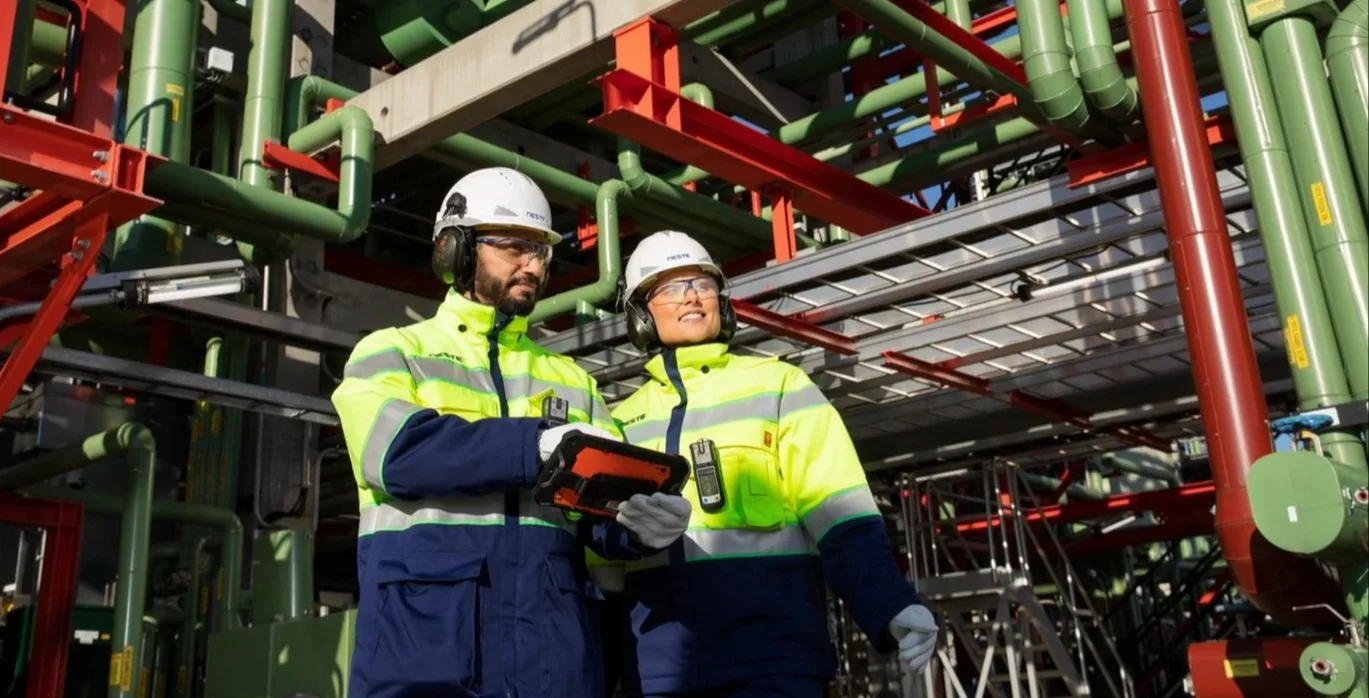Sustainability governance

Neste’s sustainability vision and objectives are an instrumental part of our strategy, guiding us on our growth and transformation journey.
Managing sustainability
Neste's sustainability work is managed by the Sustainability, Human Resources, and Health, Safety and Environment (HSSEQ) organizations.
The Executive Committee approves Neste's sustainability priorities. Responsibility for individual corporate sustainability targets is shared between the members of the Executive Committee.
The Vice President, Sustainability, is responsible for ensuring that relevant management processes and impact assessments related to material corporate sustainability topics are developed and implemented as part of our strategy. The relevant business units and functions reserve the required resources within their scope to implement the actions commonly agreed in the Executive Committee. The Vice President, Sustainability leads a dedicated global Sustainability function.
The sustainability vision is part of the Neste strategy and it undergoes the same Neste Executive Committee and Board review as any other strategic priority. The Board approves the long-term ambition and targets for the sustainability vision, based on the proposal from the Executive Committee and the Sustainability function, and regularly reviews the sustainability performance.

Our global sustainability commitments
Sustainability-related risks
The Neste Corporate Risk Management Policy and supporting principles, requirements and processes also apply to sustainability risks, which are managed as a specific risk category in quarterly risk reviews. The assessment considers short-, medium- and long-term perspectives. Our operations are associated with a number of sustainability-related risks. We aim to identify any threats and proactively prevent them. The most important risk issues are evaluated as part of the strategic planning and performance management cycle. The risk management team monitors the level of risks and ensures that the risks are identified and mitigated appropriately by Neste's business units, functions and country units. We report on our most significant sustainability-related risks annually in our Annual Report and its Review by the Board of Directors. Our risk-based approach and our sustainability risks are further described in our Non-Financial Information (NFI) Statement.
Materiality assessment
Understanding the views and expectations of our stakeholders is crucial for executing our sustainability vision and strategy. To identify what topics we should particularly focus on in our sustainability efforts, we have conducted a GRI-based materiality assessment once every two years and engaged our key stakeholders in the process.
The previous assessment was conducted in 2022 following the double materiality approach, which considers impact and financial materiality. The most material topics identified for Neste are based on their business and stakeholder influence, outward impact on economy, environment and people, as well as the estimated magnitude of their impacts.
Our materiality assessment process is built on four stages: identification, evaluation, prioritization and the integration of the most material sustainability topics. Material topics were refined by identifying ESG aspects that are relevant to our business, as well as to our stakeholders. The topics were then evaluated based on actual and potential sustainability impacts and business-related key risks and opportunities. The final list of potentially relevant sustainability topics were then laid open to our external key stakeholders for validation.
A number of our key stakeholder representatives, such as consumers, corporate customers, Neste personnel, analysts and suppliers responded to the sustainability survey, or were interviewed by external partner. Based on the results from the assessment process, the most important sustainability topics were prioritized. The material topics reflect Neste’s business operations, as well as strategic ambitions in combating climate change and creating a healthier planet for our children. The material topics represent different sustainability aspects, and they are relevant throughout our value chain. The materiality assessment process and our materiality matrix are presented in Neste’s sustainability report 2023.
Our pathway toward CSRD
As part of building our abilities, processes and practices for the implementation of the new Corporate Sustainability Reporting Directive (CSRD), we carried out a double materiality assessment in 2023 to identify the relevance of sustainability matters and their relationship to non-financial and financial impacts in our own operations and in our value chain. The defined material topics will form the coming sustainability related disclosures under the CSRD for information about financial year 2024. In the sustainability report 2023, the information is based on our previous biannual materiality assessment.
Share this